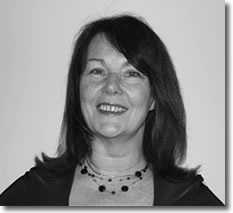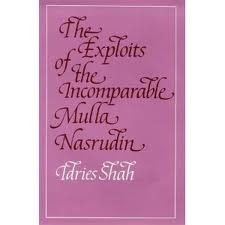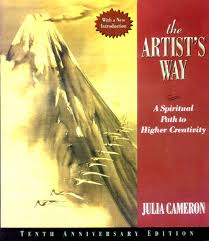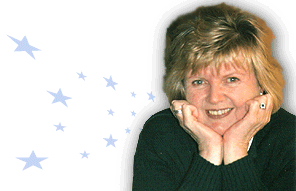My post last week about the state of my Q and A series and the updated book compilation I plan when I hit 100 Q and A’s generated more interest than I was expecting. Some practitioners wanted to jump on the Q and A bandwagon so they can be included in the new book. I mentioned in the post that one former Q&A subject would be updating his Q&A because his life and business had changed so much. That inspired two others to say they’d like to do updates. Here is one of them … Lisa Rossetti:
I believe I first learned of UK-based Lisa Rossetti through a comment she made here on A Storied Career. We’ve had a number of exchanges since, and I’m delighted to welcome her as a Q&A subject.
Bio: Lisa Rossetti has more than 20 years’ experience in training, mentoring and coaching. With a background in learning and development, she worked for 13+ years in a local Mental Health NHS (National Health Service) Trust. Much of her work now focuses on supporting teams and team leaders in health and social care settings, the public sector and third-sector organizations.
Lisa brings a unique blend of creativity, storytelling and coaching to her work, and is founder of The Story Café, a bi-monthly storytelling event (for adults) which encourages conversations and reflections on stories for Wellbeing. She is a Partner with the NHS Year of Health and Wellbeing project. Visit her Web site www.positivelives.co.uk for more information.
 Lisa’s interests include: Storytelling in organisations, Creative Writing, collaborative projects. In her spare time, Lisa volunteers her time and skills as an article writer for humanitarian organisation, The Prem Rawat Foundation.
Lisa’s interests include: Storytelling in organisations, Creative Writing, collaborative projects. In her spare time, Lisa volunteers her time and skills as an article writer for humanitarian organisation, The Prem Rawat Foundation.
Q&A with Lisa Rossetti:
Q: Has storytelling always been a part of your coaching practice, or has it evolved into a component? Do you encounter any resistance to your using storytelling in coaching (especially from organizational clients), and if so, how do you sell them on the concept?
A: I do use a lot of metaphor and story techniques which come naturally to me, and work very powerfully.
I trained as a co-active coach with the Coach Training Institute. Co-active techniques and methodology are often highly creative and quite “Gestalt-y.” Some of the approaches I now recognise as intrinsically story-based, and very powerful for shifting limiting self-beliefs. Future Self is a technique I particularly remember learning and always incorporate in my coaching programmes. The coachee envisages their future vividly and tells the story of his or her Future Self. So the story element has always been there in my coaching. What seems to be happening now in my practice is a shift from coaching incorporating story techniques towards focusing on the story itself and drawing out the learning using a coach approach.
However, I want to remain flexible with what I can offer people. I find  when I talk about stories in the context of personal development, team, or business vision, that it’s a very graspable concept. And a very healthy one, as the client places himself or herself as both author of their story and the main protagonist, the hero or heroine. It’s empowering and grants them personal authority. The structure of the story with its denouement or resolution is well embedded in us; we understand and accept that structure emotionally. Story is a wonderful sense-making tool and lends its own particular power to the coaching relationship. Just to ask a client “What’s the real story here?” sets in train a whole process of self-reflection and self-actualisation.
when I talk about stories in the context of personal development, team, or business vision, that it’s a very graspable concept. And a very healthy one, as the client places himself or herself as both author of their story and the main protagonist, the hero or heroine. It’s empowering and grants them personal authority. The structure of the story with its denouement or resolution is well embedded in us; we understand and accept that structure emotionally. Story is a wonderful sense-making tool and lends its own particular power to the coaching relationship. Just to ask a client “What’s the real story here?” sets in train a whole process of self-reflection and self-actualisation.
I find overtly promoting storytelling as an element of business coaching is still considered a bit radical here in UK, probably because the outcomes are not understood. I have seen some resistance in UK organisations to creative coaching and a preference for more process coaching models. Unfortunately, just when staff need motivation, leaders need inspiration and companies need innovation, creative activities tend to take a backseat. I suppose it is because we are experiencing times of change and uncertainty economically, and that’s when HR tends to play safe.
A key phrase I am using that seems to hit the mark is “The soft skills are the hard skills.” I explain that storytelling nurtures our softer skills like communication, engagement, intuition and empathy. You aren’t going to learn these things on a virtual learning platform any time soon. I’ve recently agreed to facilitate a story workshop with our local Carers Organisation. So hopefully perceptions of using story in learning and development are shifting.
The way I am selling the concept of storytelling is through demonstrating. Gurteen Knowledge Cafes have proved to be a good platform to reach the business world. On World Storytelling Day (2012) I gave a conference presentation on using storytelling to community and adult learning managers and volunteers, followed by a Story Café and a collaborative story round (based on Timeslips method). Once they’ve experienced the power of stories, people then need to see a legitimate context for stories in their organizations. Then it is a matter of exploring what their specific needs are. Depending on the audience, I make sure that there are credible references, and examples of how story is used practically in similar organisations. You have to make the benefits very obvious that are relevant for the audience. For example, there is research in UK that shows that storytelling improves nurses’ reflective practice, humanises the service and enables new staff to memorise important knowledge.
Q: How did you initially become involved with story/storytelling/ narrative? What attracted you to this field? What do you love about it?
A: My relationship with story has been a lifetime in its unfolding. Of course, like most children, I loved to make up stories about my toys or imaginary friends, and listen to stories, too. My father used get up especially early before work to read out loud from Tolkien’s Lord of the Rings trilogy to me when I was about 6 or 7. So I was exposed to those Anglo-Saxon rhythms of language and style of storytelling at an early age. I remember that time with my father as very special, very close.
 In 1970 I spent a year studying Indian religion at university, which is when I started to understand that stories can be used for personal discovery and transformation. I came across Idries Shah’s The Exploits of the Incomparable Mullah Nasrudin, and was intrigued by how traditional Sufi Stories could work on many levels. My imagination was captured to use stories in this transformational way. But nobody seemed to be talking about using story for learning and development in Britain at the time. Stories were for children in school; and then there was “serious literature” for the adults, like Milton, Tennyson, Shakespeare, etc. There was nothing like coaching, no NLP [neuro-linguistic programming], no storytelling for business — all that was yet to come!
In 1970 I spent a year studying Indian religion at university, which is when I started to understand that stories can be used for personal discovery and transformation. I came across Idries Shah’s The Exploits of the Incomparable Mullah Nasrudin, and was intrigued by how traditional Sufi Stories could work on many levels. My imagination was captured to use stories in this transformational way. But nobody seemed to be talking about using story for learning and development in Britain at the time. Stories were for children in school; and then there was “serious literature” for the adults, like Milton, Tennyson, Shakespeare, etc. There was nothing like coaching, no NLP [neuro-linguistic programming], no storytelling for business — all that was yet to come!
When I was teaching IT skills to staff in the National Health Service  (NHS), I started using metaphor and stories in my training sessions to encourage learners to have more confidence. I’d acquired some basic NLP techniques and was exploring different ways of engaging learners. I remember one learner was struggling with using a mouse and the new Windows environment. So I started to tell her a story about stone-age technology, how the hand-quern [pictured] for grinding corn was so perfectly shaped to the human hand. She began to relax and her “mouse technique” improved. So I was dabbling about really in a not very systematic way at first, using metaphor and stories in the learning environment.
(NHS), I started using metaphor and stories in my training sessions to encourage learners to have more confidence. I’d acquired some basic NLP techniques and was exploring different ways of engaging learners. I remember one learner was struggling with using a mouse and the new Windows environment. So I started to tell her a story about stone-age technology, how the hand-quern [pictured] for grinding corn was so perfectly shaped to the human hand. She began to relax and her “mouse technique” improved. So I was dabbling about really in a not very systematic way at first, using metaphor and stories in the learning environment.
Eventually I came to realise the potential power of stories and story-techniques, and that kindled a desire for me to integrate these techniques more in my training and coaching work. Training as a coach helped me to master some great story-based techniques. I remember my coach trainers giving me a lot of acknowledgement and encouragement to use metaphor in my coaching.
So what I love about story is both the connection with others and the connection with self, and the transformational power of stories. But it’s taken me a long time to stand up and declare “Well, yes actually I am a storytelling coach.”
Q: What people or entities have been most influential to you in your story work and why?
A: A great influence was Julia Cameron’s The Artists’ Way. In 2007, I  entered a prolonged and acute episode of hypothyroidism, which basically grounded me at home unable to work, move, or even think properly. I was really struggling with fatigue and depression for a long time. I now understand this time as my “Journey in the Wilderness.” The Artists’ Way unearthed and reconnected me with my creativity which I naturally express through story. And I have really gone from strength to strength since then. I absolutely attribute my recovery from hypothyroidism to the therapeutic power of story. Journaling is one of Cameron’s recovery practices in the book, which she calls the Morning Pages. I got so bored journaling the same old frustrating story every morning that I determined to write myself into another more positive story. And it worked! I can truly say that we become the stories that we tell about ourselves.
entered a prolonged and acute episode of hypothyroidism, which basically grounded me at home unable to work, move, or even think properly. I was really struggling with fatigue and depression for a long time. I now understand this time as my “Journey in the Wilderness.” The Artists’ Way unearthed and reconnected me with my creativity which I naturally express through story. And I have really gone from strength to strength since then. I absolutely attribute my recovery from hypothyroidism to the therapeutic power of story. Journaling is one of Cameron’s recovery practices in the book, which she calls the Morning Pages. I got so bored journaling the same old frustrating story every morning that I determined to write myself into another more positive story. And it worked! I can truly say that we become the stories that we tell about ourselves.
I’ve just finished reading A General Theory of Love by Thomas Lewis, Fari Amini, and Richard Lannon. There is very real science behind why we are able to connect emotionally because of the architecture of our triune brain. Which is also the science behind why stories engage us, and can be used not just for knowledge sharing but also therapeutically for repatterning.
Other influences are: Annette Simmons, absolutely; Margaret Wheatley’s Turning to One Other; Roselle Angwin, who writes “Writing the Self” and articles on journaling for Mslexia magazine; Lisa Bloom for her integration of story into coaching; Joseph Campbell for his mapping of the Hero’s Journey. I loved Hawkins’ retelling of the Mulla Nasrudin stories in The Wise Fool’s Guide to Leadership.
 I’m just reading Margaret Parkin‘s classic Tales for Coaching: Using Stories and Metaphors with Individuals and Small Groups. I loved the metaphor of the storyteller as a magician in Nick Owen’s The Magic of Metaphor: 77 Stories for Teachers, Trainers and Thinkers. Roselle Angwin is inspirational. I drew much strength from the extract from her book “Writing the Bright Moment — inspiration and guidance for writers” — which was published by Lapidus Cornwall in Prompted to Write. In this essay she quotes Ben Okri: “To poison a nation, poison its stories. A demoralised nation tells demoralised stories to itself. Beware of the storytellers who are not fully conscious of the importance of their gifts, and who are irresponsible in the application of their art.”
I’m just reading Margaret Parkin‘s classic Tales for Coaching: Using Stories and Metaphors with Individuals and Small Groups. I loved the metaphor of the storyteller as a magician in Nick Owen’s The Magic of Metaphor: 77 Stories for Teachers, Trainers and Thinkers. Roselle Angwin is inspirational. I drew much strength from the extract from her book “Writing the Bright Moment — inspiration and guidance for writers” — which was published by Lapidus Cornwall in Prompted to Write. In this essay she quotes Ben Okri: “To poison a nation, poison its stories. A demoralised nation tells demoralised stories to itself. Beware of the storytellers who are not fully conscious of the importance of their gifts, and who are irresponsible in the application of their art.”
This is how I see the challenge offered to us as storytellers, whether we use story in coaching and development, in business, through media, books, round the campfire.
I think that the way we construct our world and understand it depends so greatly on language and immensely on metaphors and of course the stories we tell about ourselves and our world. I read Metaphors We Live By by Lakoff and Johnson to get a more academic perspective when I was studying research methods for my postgrad diploma in coaching. I interviewed voluntary-sector leaders as a piece of research last year for a training department in Manchester Metropolitan University, using a semi-structured interview. In the final interview question the research participants were asked to give a metaphor for their emergent leadership. I’m interested in how the story lens helps the both the teller and the listener understand the “Being” of leadership, what it means to become a Leader.
I can’t remember how I first stumbled across A Storied Career but I read each and every one carefully with great enjoyment. Each issue points me towards all kinds of interesting work, authors, books, websites, projects, helping me stay fresh and current, and explore different approaches.
I also really like Twitter where you can read fantastic little Flash Fiction Stories from everyday life told through a huge variety of voices. I was a bit resistant at first to social media, thinking what on earth could I say of any real purpose in 140 characters, and why bother. But then I reframed Twitter as a kind of writing discipline and gave it a go. There’s something quite playful about Twitter, I think. I’ve recently taken to sending my new followers a “Twaiku” — a Twitter Haiku in the traditional form of 5-7-5 syllables, which is rather fun! I met one of our Chester Literature Festival committee members via Twitter. That’s how I got involved with a community-storytelling event in my neighbourhood last autumn, which involved our local primary school — a real joy!
Lizzie Gates of the Lonely Furrow Company has been immensely  encouraging. She co-delivered with me on my first excursion into storytelling, a story workshop called “The Storyteller Within” at an International Women’s Day event in Manchester, England.
encouraging. She co-delivered with me on my first excursion into storytelling, a story workshop called “The Storyteller Within” at an International Women’s Day event in Manchester, England.
Q: What future aspirations do you personally have for your own story work? What would you like to do in the story world that you haven’t yet done?
I’ve recently registered for my master’s degree at my local university in Applied Storytelling for Health and Social Organizations. So this year, I will be focusing more on organizational storytelling. A particular contract I have just begun with a local council’s Adult Social Care department is to gather evidence through real-life stories of their clients of how they engage with the council’s services. I will be training their staff to be more “story aware” and to be story-gatherers. Another aim of the project to learn from these stories to shape best practice and understand the needs and hope of their clients.
I see myself working more with organizational storytelling, within health and social care, developing healthy and highly motivated teams. Story releases so much positive energy and healthy engagement. Story allows us to look at our fears and doubts in a safe place, and dissolves our “defence mechanisms” which can show up as cynicism or procrastination which are real killers for teamwork. Validating the contribution of each member is extremely important for the health and strength of the team. Story can help create a safe place for everyone to have a voice, to be heard and to be seen.
I’ve recently been asked to put in a proposal to a local hospital to run storytelling groups for their elderly patients, and also to train their nursing staff and carers to use stories. Ideally, I’d love to run some story and creative writing groups with the hospital nursing staff to help them develop resilience, empathy and to deal with difficult emotions. That I was approached by the hospital, shows that a shift is occurring, and storytelling is becoming more credible.
I would also like to work on a 1:1 basis with leaders to help them develop their Transformational Stories. That is a very interesting area of coaching. I would be interested to see if there are any the differences in language and metaphor between male and female leaders’ transformational stories.
Q: Can you talk a bit about your Walking the Stories project?
A: The inspiration came from my collaboration with a Women’s Mentor  in Ghana. She has set up some wonderful development programmes for women, one of which is the Mentoring Walks. She inspired me to take a fresh look at how we support women’s development. Walking and learning through dialogue and story is a traditional practice in many cultures. Since time immemorial and across the world, women share conversations and stories as they walk together — to fields and farms, to the well, or to the marketplace.
in Ghana. She has set up some wonderful development programmes for women, one of which is the Mentoring Walks. She inspired me to take a fresh look at how we support women’s development. Walking and learning through dialogue and story is a traditional practice in many cultures. Since time immemorial and across the world, women share conversations and stories as they walk together — to fields and farms, to the well, or to the marketplace.
My Walking the Stories event is a unique blend of two traditional and powerful practices, mentoring and story-telling. Walking the Stories invited women of all ages to celebrate International Women’s Day on Sunday March 6 [2011] by walking together in the beautiful and historic Chester River Meadows. Participants had the opportunity along the way to have an informal mentoring conversation with a trained coach-mentor. The concept had such a great reception. A lot of very professional women coach-mentors were involved. I held another Walking the Stories event this year too, so it looks like Walking the Stories will continue as an annual event in Chester.
Subsequently I have been approached by a communications company who have major clients in the National Health Service, and they are interested in adapting and promoting the Walking the Stories format for managers and teams; a combination of managers’ meeting, mentoring and keeping fit!
Q: You describe yourself as a “champion for women entrepreneurs.” To what extent have you noticed any differences in the way women and men entrepreneurs tell stories about their entrepreneurial enterprises?
A: : I volunteered as an ambassador for Women’s Enterprise a couple of years ago, as part of an initiative sponsored by our Regional Development Agency (RDA) to promote women’s enterprise in the North West of England. That work has now come to end with the decommissioning of the RDAs this year. I found being an ambassador was a good platform for meeting with other women and positioning myself as a development specialist.
In my experience, women need encouragement to create a story of  success that is authentic for them. I don’t think this is because women are less capable, ambitious or visionary. I think it has something to do with language and the range of metaphors prevalent in business culture. If you bring to mind any common business success metaphor, e.g., the Ladder of Success, a Ramp, a Mountain — these are things that require muscular effort and endurance, and are competitive rather than collaborative in nature!
success that is authentic for them. I don’t think this is because women are less capable, ambitious or visionary. I think it has something to do with language and the range of metaphors prevalent in business culture. If you bring to mind any common business success metaphor, e.g., the Ladder of Success, a Ramp, a Mountain — these are things that require muscular effort and endurance, and are competitive rather than collaborative in nature!
I find women are exposed almost exclusively to the “Hero’s Story” of male enterprise. The language of male entrepreneurial success is usually drawn from military or sporting worlds, and often aggressive. I wonder if the language that tells the Story of Success in the world of big business is just inaccessible to women. Without a language that you feel comfortable using, it is hard to tell your own story.
 its founder, Alice Paul, lived in my hometown, Moorestown, NJ.
its founder, Alice Paul, lived in my hometown, Moorestown, NJ.















